Python is a powerful and versatile language that has become a go-to tool for electronics enthusiasts. Its simplicity, wide array of libraries, and compatibility with hardware make it ideal for learning how to program with Python for electronics projects. In this guide, we’ll explore Python programming concepts, how to integrate Python with microcontrollers, and how you can use Python for electronics to bring your creative ideas to life.
Why Choose Python Programming for Electronics?
Python offers several advantages for electronics projects, making it a top choice for developers and hobbyists alike:
-
Simple Syntax: Python’s beginner-friendly syntax makes it easy to write and debug code, reducing development time.
-
Extensive Libraries: Libraries like RPi.GPIO, PySerial, and MicroPython allow seamless hardware control and sensor integration.
-
Cross-Platform Support: Python works across platforms such as Raspberry Pi, Windows, macOS, Linux, and microcontrollers.
-
Versatility: Beyond hardware control, Python excels at data processing, automation, and Internet of Things (IoT) applications.
Getting Started with Python for Electronics
To effectively use Python with microcontrollers and electronics, start with the basics:
1. Learn Python Fundamentals
Before diving into electronics, it’s important to master core Python programming concepts:
- Syntax and Variables: Work with data types (integers, floats, strings) and variables.
- Control Flow: Understand loops (for, while), conditional statements (if-else), and error handling (try-except).
- Functions: Create reusable blocks of code for better project modularity.
- Data Structures: Use lists, dictionaries, and tuples to write efficient data-handling programs.
- Object-Oriented Programming: Employ classes and objects to structure your code into scalable projects.
2. Integrating Python with Hardware
Once comfortable with the basics of Python, start working toward hardware integration:
- GPIO Control: The libraries RPi.GPIO or gpiozero control the input/output pins on the Raspberry Pi.
- Communication Protocols: Understand how I2C, SPI, and UART work for interfacing sensors and peripherals.
- Sensor Integration: Read sensors using Python libraries such as Adafruit_DHT or PySerial.
Python with Microcontrollers
Python is highly compatible, especially MicroPython and CircuitPython, with microcontrollers:
- MicroPython: A minimum size Python version which is targeted at microcontrollers such as ESP32, ESP8266, and STM32.
- CircuitPython: Python on hardware implementation by Adafruit for beginner-friendly hardware.
Python can be performed on the following main microcontrollers:
- Raspberry Pi: Good all-round for computers and hardware control.
- ESP32/ESP8266: Good for wireless IoT projects.
- Adafruit Feather: Very good for beginners and prototyping.
Hands-on Python Electronics Projects
Consolidating your learning of Python for electronics best occurs through projects. Some ideas will be as follows:
- Temperature Monitoring System: The use of Python in reading data from a temperature sensor onto an LCD.
- Smart Home Automation: Devices such as lighting or fans will be automated using sensors and relays.
- Robotics: Motors, servos, and sensors will be controlled to make a simple robot.
- IoT Applications: Connect your devices to the internet for remote control and monitoring.
Data Logging and Visualization with Python
Python’s libraries make it easy to collect, analyze, and visualize data:
- Data Logging: Save sensor readings to CSV files or databases like SQLite.
- Visualization: Use Matplotlib to create real-time graphs for better data interpretation.
How Long Does It Take to Learn Python for Electronics?
The time it takes to learn programming for electronics depends on your background and goals. Here’s a rough timeline:
- Basic Python Skills: 2-3 weeks for beginners.
- Hardware Integration: 3-4 weeks to set up and connect components.
- Project Development: 4-6 weeks to build small projects.
- Advanced Topics: 2-3 months to explore IoT, machine learning, or wireless communication.
It means you will be able to understand electronics with Python within 2-3 months and start making your creative projects consistently.
Conclusion
Python programming is one of the best approaches to electronics projects because it has a lot of advantages: simplicity, flexibility, and a powerful ecosystem of libraries. Learning how to use Python with microcontrollers like ESP32 or advanced IoT applications, the language has enormous potential in opening up endless possibilities. Master the basics, interface Python with hardware, and practice multiple projects to harness the fullest power of Python for electronics. With determination and imagination, your ideas can finally become a reality!
FAQ
What is the best way to learn Python programming for electronics projects?
Start with Python fundamentals, then focus on GPIO control, sensor integration, and hands-on projects with microcontrollers like Raspberry Pi or ESP32.
Why use Python with microcontrollers like ESP32 or Raspberry Pi?
Python simplifies hardware control and IoT integration with its extensive libraries, making it ideal for both beginners and advanced users.
Related Articles:

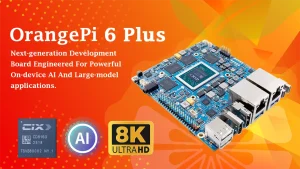
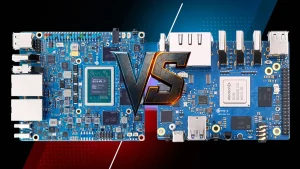
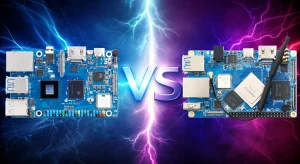
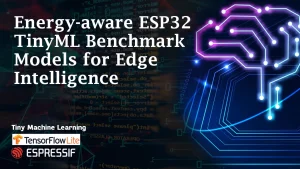

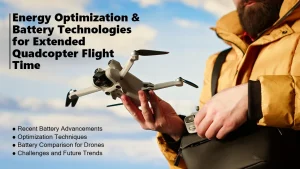
10 thoughts on “How to Program with Python for Electronics: Sensor Integration to IoT Guides”
Pingback: Orange Pi 5 Ultra in AI and ML: Powerful Edge Computing SBC
Pingback: Top 5 Orange Pi 5 Ultra Graphics and Image Processing Uses
Pingback: Raspberry Pi vs Arduino: 4 Differences for Beginners
Pingback: Orange Pi 3 LTS Review: Features, Comparison & Uses
Pingback: FPGA Programming Languages: A Detailed Overview - SIQMA
Pingback: DeepSeek on Raspberry Pi: 5 Steps to Harness AI
Pingback: Best Open source Boards for IoT and Electronics 2025
Pingback: Raspberry Pi Home Assistant: Build Your Smart Home Hub
Pingback: Orange Pi 5 Ultra for Robotics: Unlock New Possibilities!
Pingback: Arduino Modulino Knob: Smart Choice for Precision Control